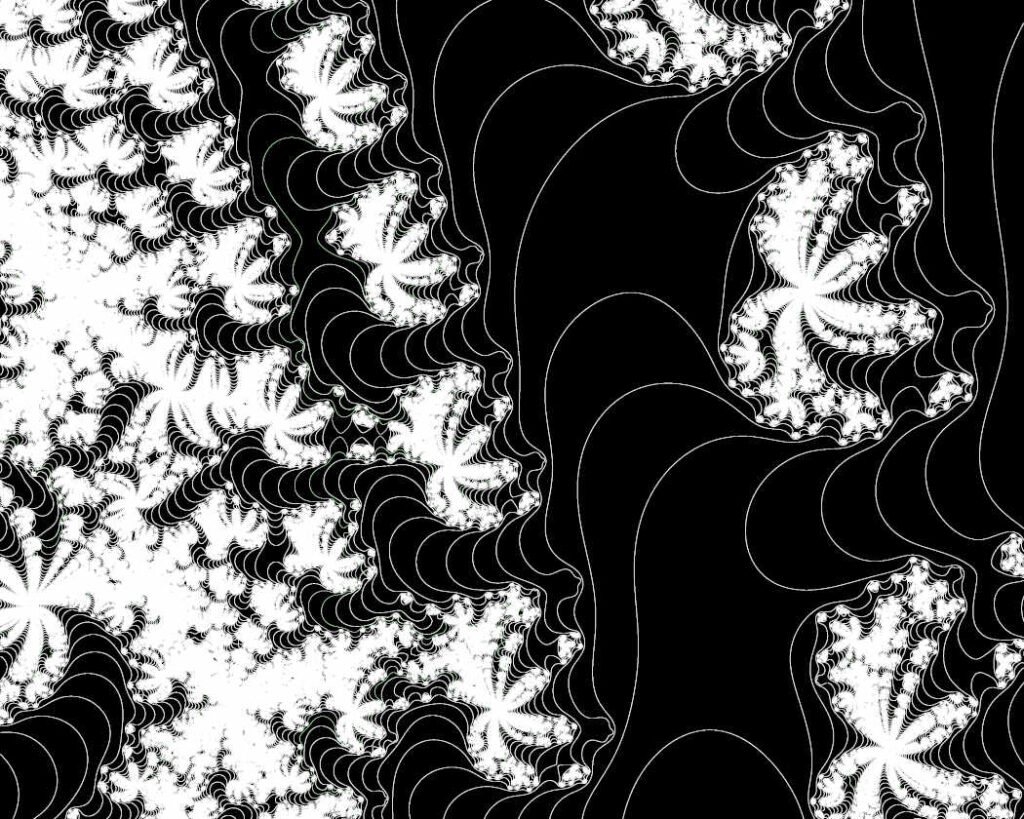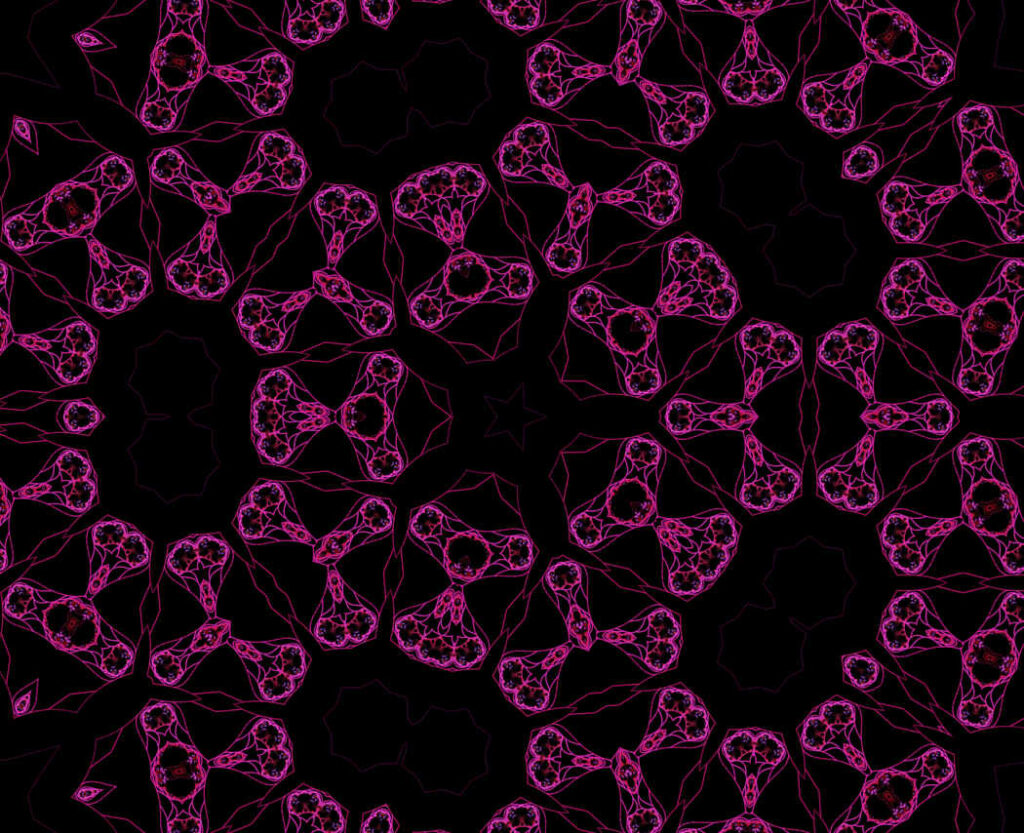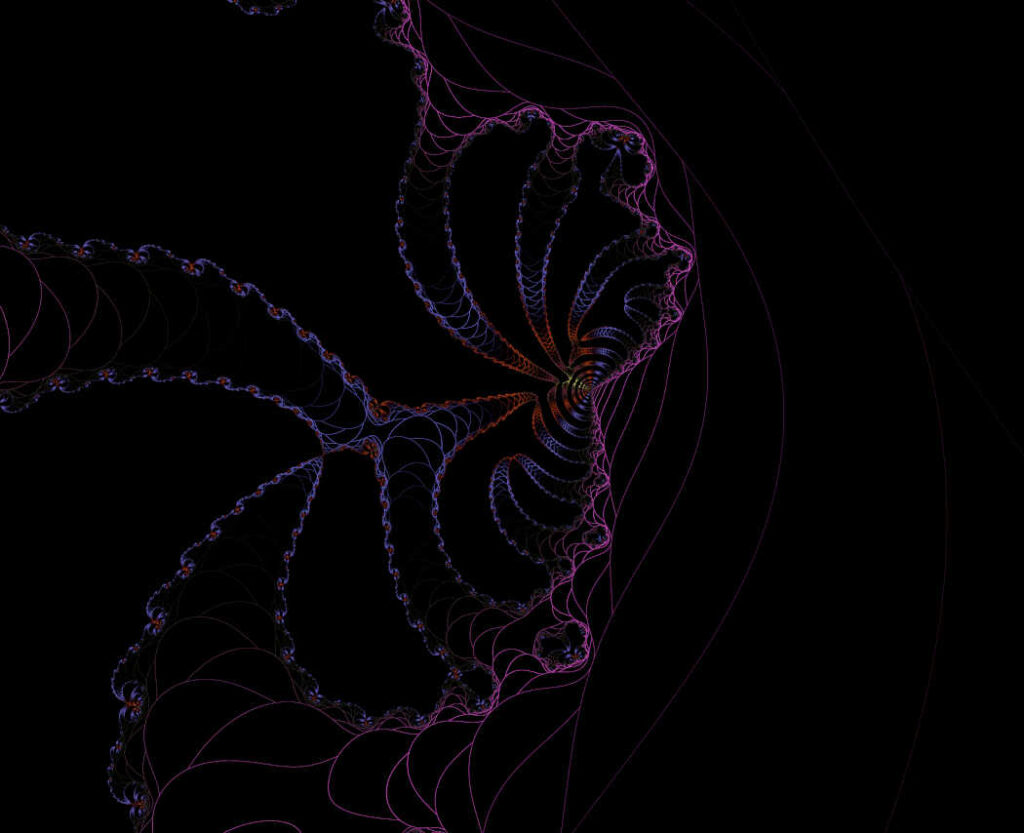



What is a fractal?
A fractal is a self similar geometric object. For instance, the Mandelbrot set is a commonly recognized two dimensional fractal. In design, fractals are a bridge between the mathematical scientific world and the emotional aesthetic world. Moreover, they are logical objects that inspire awe. Furthermore, they represent artistic ideals as forms of perfect symmetry and proportion as well as natural principles. For instance, fractals are most remarkably beheld in the phyllotaxic spirals of plants and the symmetrical morphology of animals. Pretty much all life as we know it is fractal.
How do you explore fractals?
Fractals are a long held fascination for computer scientists and programmers. The first time the Mandelbrot set was visualized by a computer it was rendered in ASCII by the humble asterisk symbol. Generating a fractal is a common project for computer programmers to cut their teeth on. Consequently, it is hard to find a programming language where the problem has not been thoroughly explored.
There are many a digital solutions for generating fractals. For instance, my solution to generate fractals and explore them is a program called xaos. It can generate and manipulate different fractal sets. For instance, you can manipulate the color palette for the various layers of topology, or render only the contours of the forms. Xaos is more a fractal synthesizer than a fractal generator.
The result of generating and manipulating these 2D fractals is somewhere between cartography and op art. For instance, as with op art the color, shape and texture gives these images their full character. Moreover, the unfolding nature of the patterns gives you a real sense of what mathematicians mean by the word infinity. The algorithm generating the fractal is limited only to the computer’s hardware. The Mandelbrot set and other 2D fractals are truly infinite.